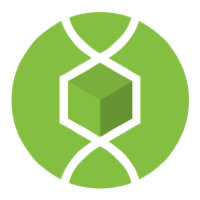Serenity now! Keep calm and do science with real data in the classroom
Author(s): Drew LaMar1, Kristin Jenkins2, Nicole Chodkowski3
1. College of William and Mary 2. BioQUEST 3. Radford University
1163 total view(s), 48 download(s)
Description
Abstract: We will demonstrate the free web application currently under development on QUBES called Serenity that brings data science into the classroom. Being designed for education, Serenity puts real data into student’s hands to do science.
Description: Data science is an emerging field that will transform how biological research is done, and impact how we teach biology. At this early stage, there are few resources and guidelines for teaching and infusing data science skills across biology (e.g. in bioinformatics, ecology, epidemiology, and cell biology).
What is data science? A recent report by the National Academies entitled Envisioning the Data Science Discipline discusses the development of data acumen, consisting of multi-dimensional skills and concepts, including quantitative reasoning, knowledge of and proficiency in the data life cycle, social concepts including ethics and reproducibility, and domain specific knowledge, which can vary wildly even within Biology.
Serenity is a free open-source web application being developed for educational purposes, designed around supporting faculty in building data acumen in their students. We will do a hands-on demonstration of a sample teaching module developed for Serenity and another application called Radiant, analyzing real-world, messy biological data. Serenity is being designed with the focus on the data first to help students through the full data life cycle: from direct data import from biological data repositories like NEON; to data exploration with interactive visualizations; to communication and reporting of results through interactive documents.
After demonstrating Serenity and Radiant, we will invite attendees to choose a dataset of interest, explore the dataset through data visualization and analysis, and create a simple report of their findings.
Learner Outcomes: Participants will begin to develop data acumen, which includes concepts such as:
– Quantitative pillars: Mathematical, computational, and statistical thinking
– Data life cycle: Data import, management, curation, and analysis
– Social concepts: Communication, reporting, reproducibility, and ethics
Participants will also learn how to use Serenity and Radiant to
– work with real data throughout the data life cycle,
– answer scientific questions using real data,
– develop teaching modules for your classroom.
Cite this work
Researchers should cite this work as follows:
- LaMar, D., Jenkins, K., Chodkowski, N. (2019). Serenity now! Keep calm and do science with real data in the classroom. QUBES Leadership Team, QUBES Educational Resources. doi:10.25334/Q46X6S
